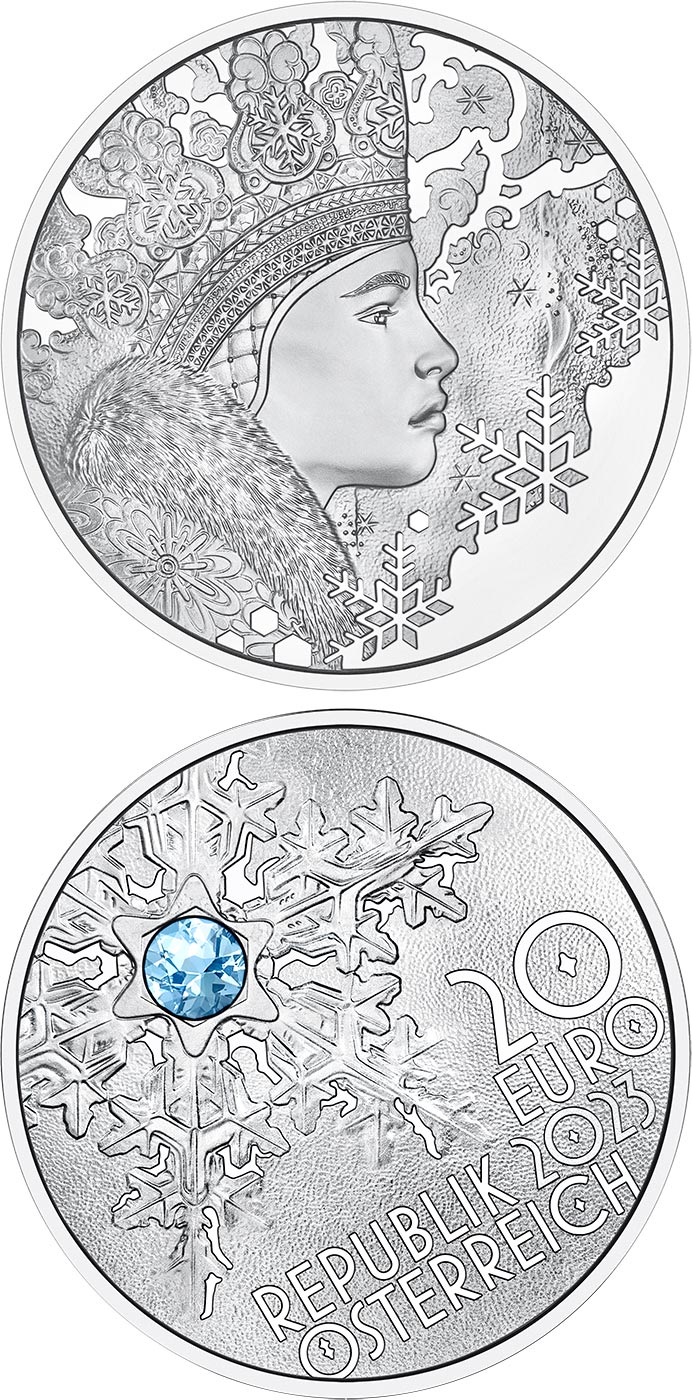20 euro - The Snowflake

“It snows! it snows! from out the sky, the feathered flakes, how fast they fly. Like little birds that don’t know why, they’re on the chase, from place to place, while neither can the other trace. It snows! It snows! a merry play is o’er us, on this heavy day!” Yet beneath the seemingly chaotic nature of snowfall, so beautifully captured by American poet Hannah Flagg Gould (1789–1865), lies a surprising symmetry.
German astronomer and mathematician Johannes Kepler (1571–1630) pondered this with childlike curiosity when snow began to fall as he was walking across Charles Bridge in Prague in 1610. This experience prompted him to write the first scientific treatise on snow crystals, Strena Seu De Nive Sexangula, in which he asks why when snowflakes fall, although each one is different from the next, they are always hexagonal in shape. A simple enough question, but one that no one had ever asked before and one that was not answered for another three hundred years. Nonetheless, in trying to answer it, Kepler provided some fascinating insights into snowflakes and asked some pertinent questions about physics, mathematics and biology.
The life of a snowflake may seem inconsequential, but Secrets of Snow turns it into something momentous. The obverse of the coin features a magnification of a snow crystal with an ice-blue gemstone in its centre and polished edges. A young woman is shown in profile on the coin’s reverse. A manifestation of winter, she is a snow princess adorned in a crown and a cloak, both decorated with snow crystals. The background is partially polished around her crown and on the lower right-hand side.